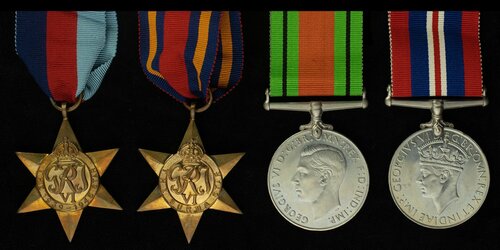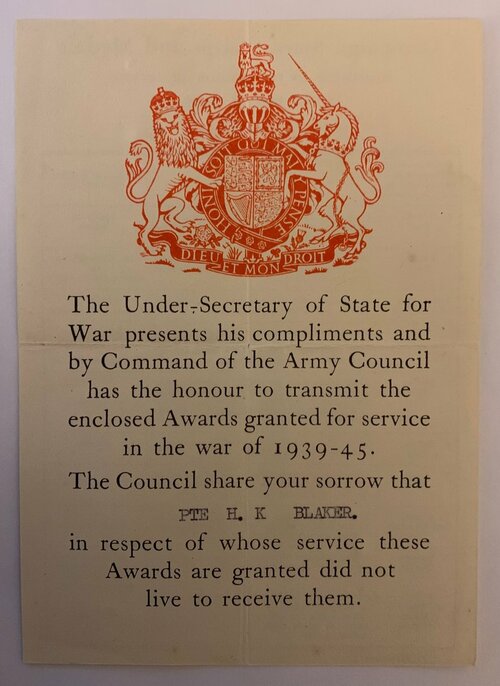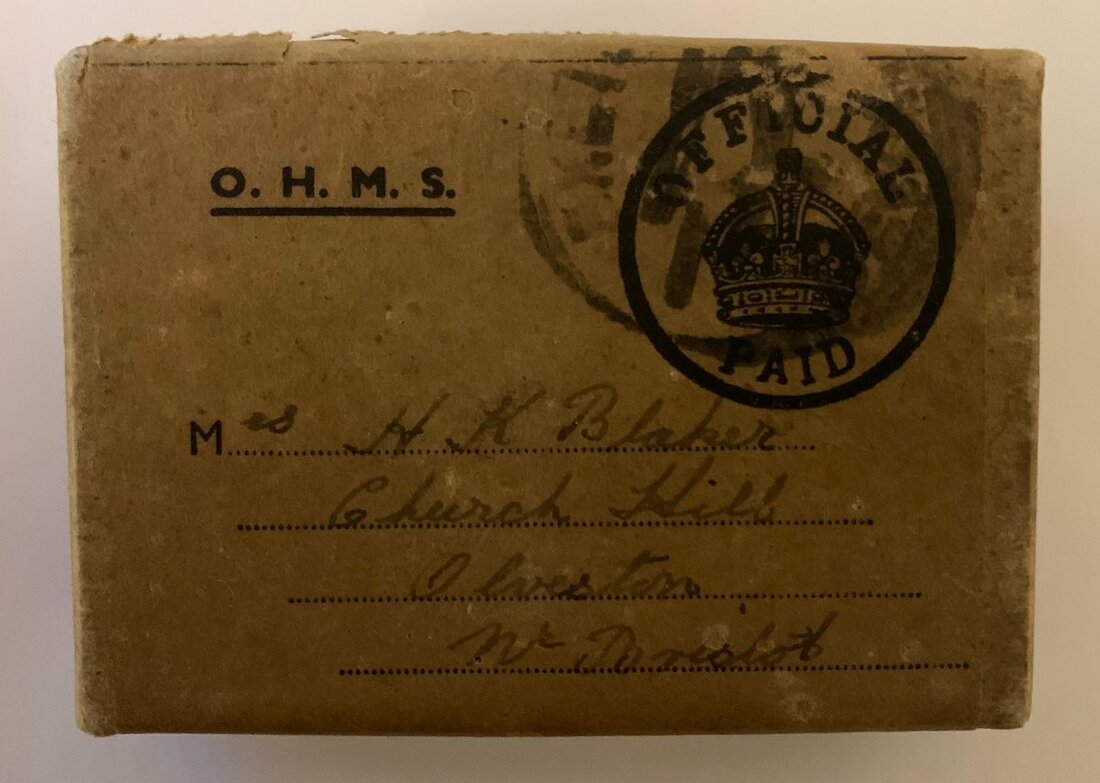Auction: 22101 - Orders, Decorations and Medals - e-Auction
Lot: 397
Four: Private H. K. Blaker, 10th Battalion, Gloucestershire Regiment, killed in action by a Japanese Sniper at the Battle of Myitson on 17 February 1945
1939-45 Star; Burma Star; Defence and War Medals 1939-45, Medals in their waxed paper envelopes, with Army Council condolence slip in the name of 'Pte H. K. Blaker.' and with postage box named to 'Mrs H. K. Blaker, Church Hill, Olveston, Nr Bristol', extremely fine (4)
Harold Keith Blaker was born at Bath in 1911 and married Winifred Annie Smith in April 1936, having moved to Olveston to work as a gardener. He served with the 10th Battalion, Gloucestershire Regiment (No. 5191574) during the Second World War in Burma and was killed in action, felled '...by a Japanese sniper and was buried very near where he fell in battle' (The War Memorial Book for the parishes of Olveston and Aust, refers) on 17 February 1945 during the Battle of Myitson, being commemorated upon the Rangoon Memorial.
The Soldiers of Gloucestershire website gives a fine account of the actions of the unit in the period:
'That February, 26th Indian Brigade and the much weakened 10th Battalion, which was now down to little over 250 men, were to become involved in the severe fighting that was the battle of Myitson. The strong, but untried, 26th Brigade led the attack on Myitson on 1st February, which failed, trying again on the 8th. This time they were successful and established a defensive perimeter which was subjected to a violent series of Japanese counter-attacks.
From 11th February the Gloucesters were fed in over the next two days to the support of the beleaguered 26th Brigade. The jungle fighting was fierce and confused, troop movements hampered by tall elephant grass.
The Battle of Myitson came to a climax on the 17th February, before the Japanese melted away, defeated. The 10th Battalion, already weak at the start of the action, had lost 2 Officers and 117 men. 26th Brigade’s casualties had been of a proportionately similar order of magnitude. Lance-Corporal Ronald Spreadbury noted in his diary on 18th February:
“Good news this morning, about 250 Japs killed in yesterday’s attack. Supplies are flown in, food and ammo were very short, all O.K. now. Plenty of aircraft about. Gunners blow up food and ammo dump at old position.”
It had been a magnificent feat of arms by the soldiers on the ground, but the conduct of the battle led to some savage recriminations at the top, and the commanding officer of the 10th Battalion was sacked. Lieutenant-Colonel Richard Butler, who had long been with the Battalion, had only recently been promoted and taken over from Lieutenant-Colonel Hose. He wrote a long and detailed analysis of the battle and its aftermath, explaining and justifying his own actions while being highly critical in particular of the commander of 26th Indian Brigade, Brigadier Jennings. According to Butler, Jennings “was a gunner who knew little about Infantry tactics. He was brand new and a great talker.”
Subject to 20% VAT on Buyer’s Premium. For more information please view Terms and Conditions for Buyers.
Sold for
£130
Starting price
£60









